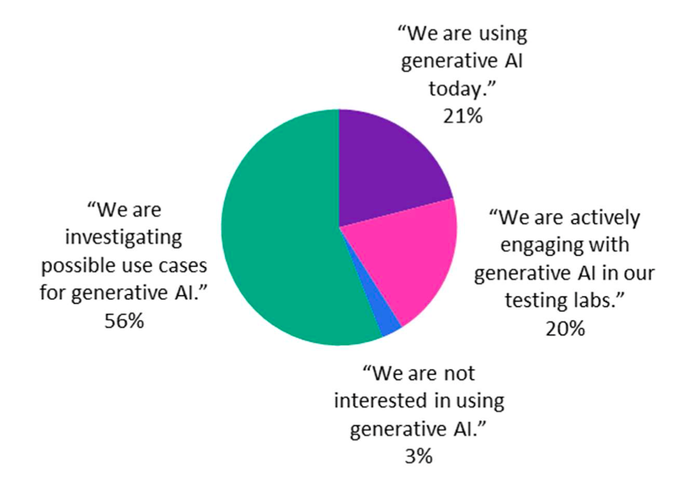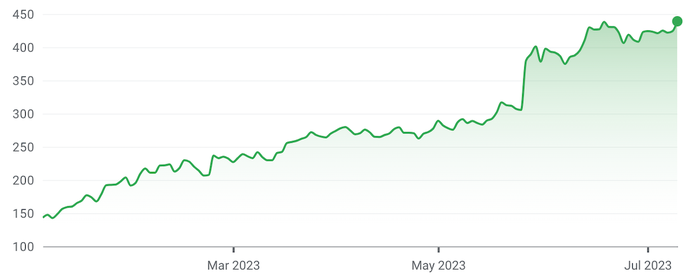Telcos won't find much joy in gen AI as they latch onto the hype
Using the hyped technology to realize cost savings or drive sales growth is likely to be a struggle for most operators.

There is no such thing as artificial intelligence (AI), or – if there is – it is not to be found in the generative AI programs now mushrooming across the planet. Not, that is, if by intelligence people mean something that approximates the human variety. And if this were not the implication, why use "artificial" as a qualifier?
What we have instead is a kind of very sophisticated search engine able to string together complete sentences, at a human's prompt, after it has ransacked the Internet for words and explanations generated mainly by humans. There is nothing original in gen AI. The moments of genius in human history – Einstein coming up with his theory of relativity, say, or even Jimi Hendrix turning a conventional electric guitar upside down and playing it left-handed in a style no one had before – will never be matched by the AI we have now.
This has not stopped people from worrying that gen AI will steal their jobs like a low-cost foreign worker, or even kill them in future. Journalism is one of the professions seen to be at risk, according to an event hosted by analyst firm Omdia (a sister company to Light Reading) in London this week. Market analysis is another. But it's true only if the journalists and analysts are themselves regurgitating old stories and research – stuff you can already find online.
"What has any of this got to do with telecom?" you are probably asking by now. Only that telcos have leapt with great enthusiasm on the gen AI bandwagon and seem in danger of believing the hype. This, in itself, is no great surprise. Telcos have a 20-year-old habit of latching onto technology buzzwords and thinking each one is the big savior they need. None has worked out that way.
"The hype cycle is in full force, and we see a number of these buzzwords over the years with other forms of AI, blockchain, the metaverse," said James Crawshaw, a principal analyst with Omdia, at the London event. "Cast your mind back to 2014 and the buzzword at the time was big data and there was a great quote from the professor of psychology at Duke University who said big data is like teenage sex. Everyone talks about it, no one really knows how to do it, everyone thinks everyone else is doing it and so everyone pretends they are doing it."
According to a survey Omdia carried out in June, 56% of communications service providers claim to be investigating possible use cases for gen AI, while 21% said they already use it. Another 20% said they were actively engaging with it at testing labs. This left only 3% registering zero interest whatsoever. As the sample size was just 39 professionals, that meant a single person was neither doing nor pretending to be doing it.
Computer says no
Despite this wave of enthusiasm, gen AI probably won't provide much joy for most telcos. The most obvious use case is the chatbot one, where a computer rather than a person deals with customer queries. But scrapping jobs in customer-service departments looks risky because AI's fallibility remains less socially acceptable than that of a well-trained human assistant. Just look at the outrage when a single self-driving car so much as nudges a pedestrian. Crawshaw featured a good example of how gen AI can badly screw up during his presentation. In an AI-generated photo of four advertising executives on a beach, one of them appears to have sprouted a third leg.
Entrusting software-writing tasks to gen AI is probably even riskier. Anyone who has had even the smallest exposure to coding knows the tiniest error can upset the whole program. This means sensible operators will have to retain small armies of software engineers as a human check on what gen AI is churning out. One senior security exec at a big telco said he is more worried about people using gen AI to create new attack vectors. All this will make it very hard to realize cost savings.
Omdia survey of 39 CSP professionals, June 2023 (Source: Omdia)
(Source: Omdia)
If it fails there, gen AI could always spur revenue growth by creating new forms of content and applications. There was much talk at Omdia's event about using the technology to aid TV production or even to invent radio shows and podcasts (what one attendee referred to as the botcast). The European Broadcasting Union – responsible, among other things, for the Eurovision Song Contest – has come up with RadioGPT, allowing computer-generated voices to substitute for DJs.
But it holds all the appeal of waterboarding. People listen to radio shows and podcasts, or read books, to engage with real people and their experiences, feelings and views. After the novelty has worn off, will anyone seriously care what a computer "thinks" about the weekend match? And the innovation problem persists. Its mode of operation means gen AI will forever be limited by what humans have already done.
Show me the money
In the meantime, the big cheerleaders for gen AI are making no money from it. Open AI, the Sam Altman-led company behind ChatGPT, has been valued at $30 billion despite earning not a single cent from gen AI, noted Crawshaw. It survives because of its deep-pocketed backers, mainly Microsoft, and access to Microsoft's vast data-center resources, needed for the training of large language models.
Nvidia's share price ($) (Source: Google Finance)
(Source: Google Finance)
The sole winner so far appears to be Nvidia, a designer of expensive chips (graphical processing units) used to support AI software. Its market cap soared past the $1 trillion mark this year, making it eight times more valuable than Intel. But it is in danger of a slump unless Open AI and others can find a sustainable business model. The emerging challenge from open-source gen AI could make that even harder.
Telcos should probably worry about heavier reliance on Big Tech with the use of gen AI, especially if the open-source flavor does not measure up. AWS and Microsoft Azure have both unveiled gen AI products aimed at telcos this year, offering foundation models, applications and other resources. The alternative approach is DIY: buy chips directly from Nvidia, hire AI experts, invest in data-center facilities where large language models can be trained. It sounds neither easy nor inexpensive.
Related posts:
— Iain Morris, International Editor, Light Reading
About the Author(s)
You May Also Like




_International_Software_Products.jpeg?width=300&auto=webp&quality=80&disable=upscale)







